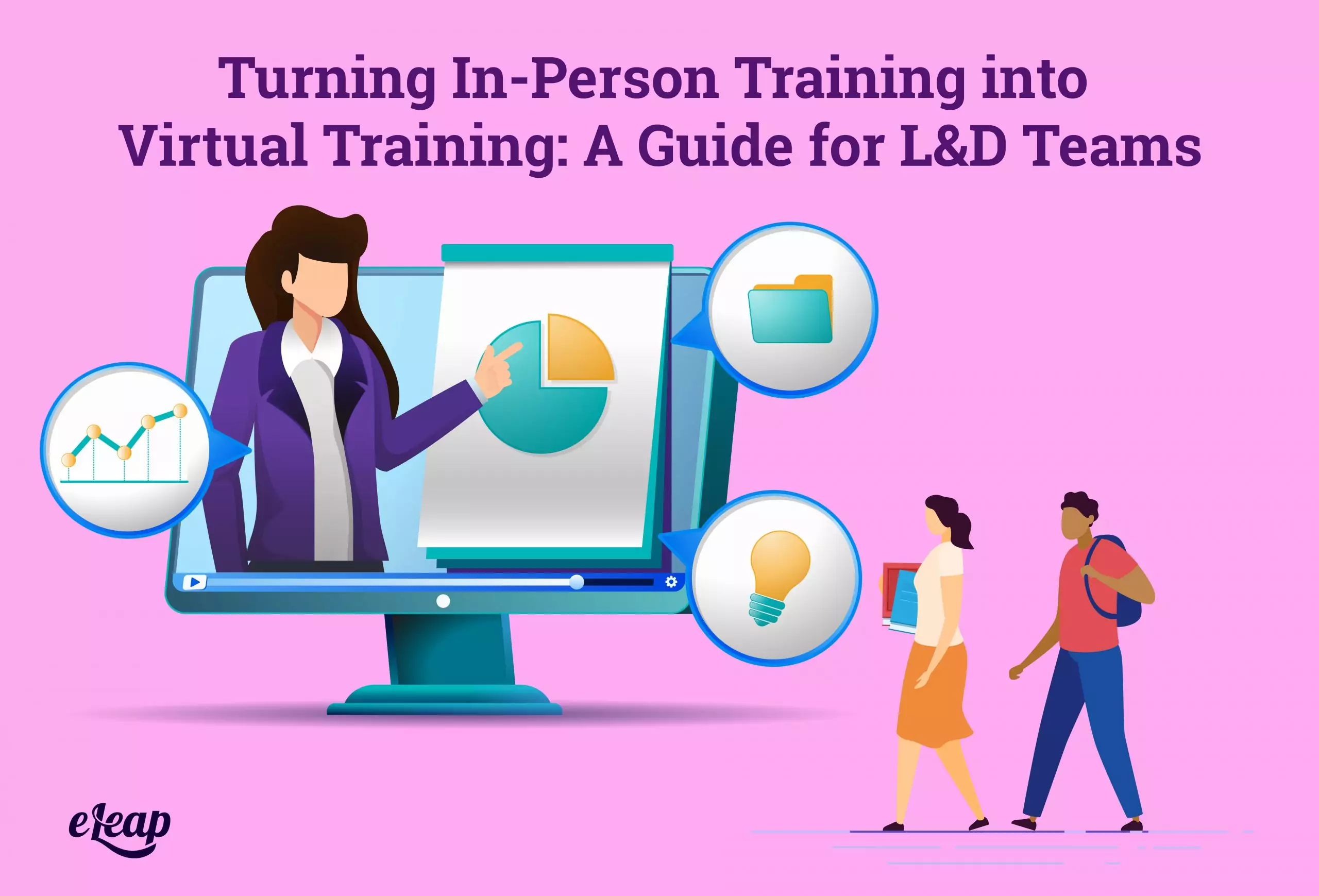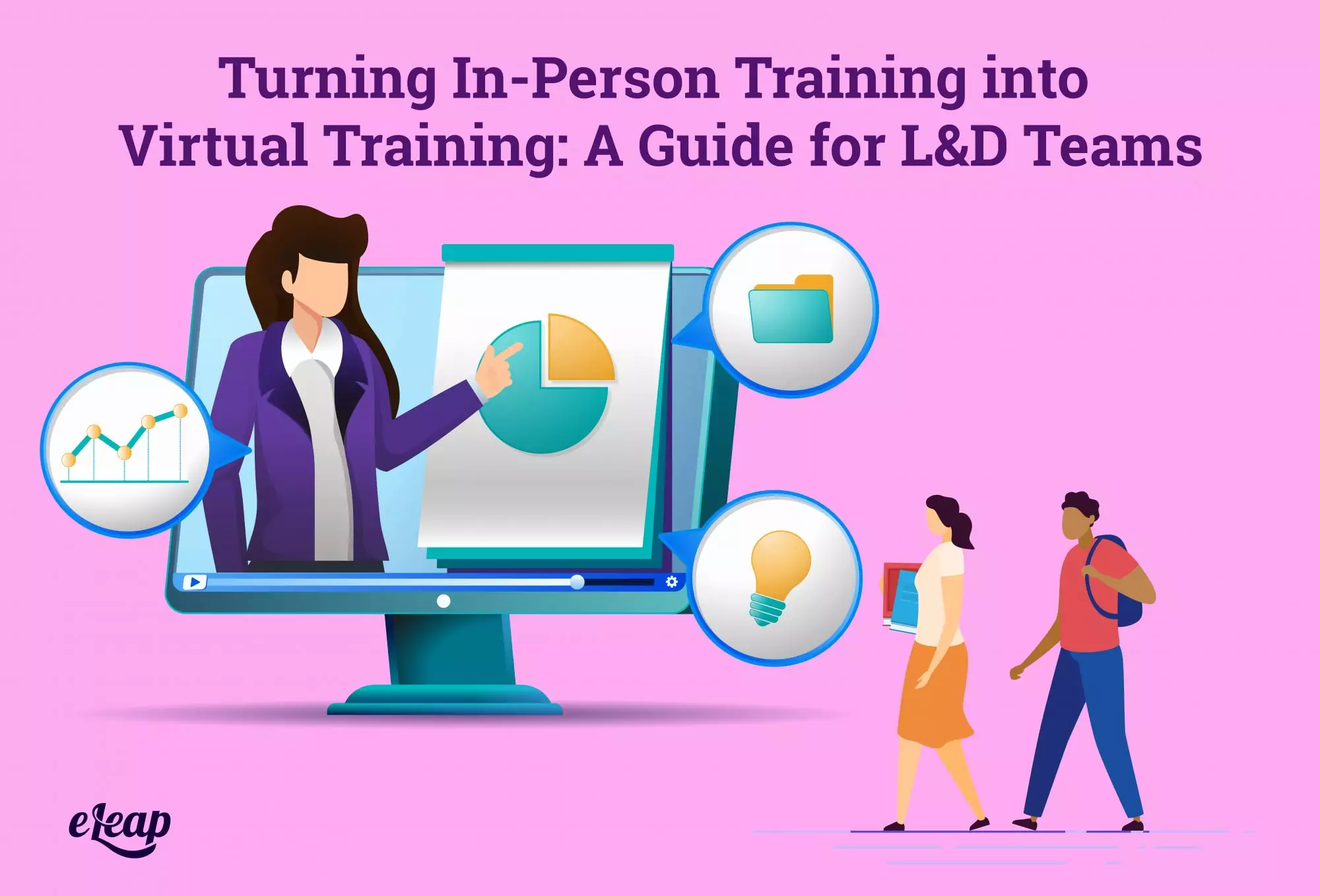Turning In-Person Training into Virtual Training: A Guide for L&D Teams

Despite the lingering effects of the novel coronavirus, training and development must go on. Many organizations initially paused those efforts at the onset of the pandemic, but as the new paradigm has evolved, it becomes apparent that they must be restarted. Remote work is the new normal, and we must find ways to change and adapt to it, including evolving our learning and development methods. With remote work becoming a staple of many organizations, so is virtual training as a method of learning and development.
Of course, growth and change can be challenging. Many organizations find themselves in the position of turning face-to-face, in-person training into virtual training. It can be a daunting prospect, certainly, but there are effective ways to simplify and streamline the process. In this guide, we will explore several critical tips for L&D teams to help make the transition less painful.

Be Strategic
The first and perhaps most critical tip to follow is this: be strategic in which face-to-face training you convert. What training is the most impactful? Which is the most urgent? While remote work is not going away any time soon, L&D teams must be able to prioritize what training content is converted to meet some specific demands.
- Is it urgent? This includes any sort of mandatory corporate training required for onboarding purposes, recertification, ongoing training, continuing education, etc. that might be tied to industry rules or government regulations.
- Is it impactful? At least initially, it’s best to start with training that has the most impact on learners and their overall journey. Of course, “impactful” can be somewhat subjective, so the team will need to sit down and assign values to various trainings to help prioritize everything.
- Does it align with business strategy? Chances are good that your organization has some training that doesn’t really move the needle when it comes to business strategy. Leave that type of training for last. It might be worth deciding whether to keep it or not, as well.
- Is it used very often? If you have training content that isn’t used very often, it should be relegated to the lowest priority on your list. If it’s been years since it was used at all, determine if you should even bother converting it.
Build Out
It’s tempting to take your slides and add the same voice-over that you’d use with face-to-face training and then package that as virtual training. Understand that this is a trap and it will ultimately detract from your learners’ experience. Instead, you need to build your content out to ensure engagement and information retention.
When building out your content, you should add more slides to encourage more interaction with the course content. Ideally, you should plan for learners to complete one slide each minute. This ensures that content changes fast enough to keep learners engaged and interested. So, from that, we can extrapolate that if you have a 60-minute in-person training, you will need 60 slides in a virtual format.
Build Interaction
We mentioned this in the last tip, but it bears discussing again – make your content more interactive. You cannot just add more slides with fewer words, nor can you just go into greater depth with the training content itself. You must add elements that help to keep virtual learners interested, engaged, and committed to moving forward.
You can achieve this with several different content types, including the following:
- Charts
- Polls
- Multiple-choice questions
- “Choose your own path” options that lead to learner specific branches
- Breakout rooms
- Annotations
Platform Considerations
When we talk about virtual training, we cannot neglect the platform you use. It may be time to take a long, hard look at yours and ensure that it measures up. Here are a few questions to ask yourself:
- Does our platform support virtual learning?
- Does our platform allow remote workers to connect to the system?
- Does our platform support interactive continent delivery?
- Does our platform do more than serve web conferences?
Ideally, you will have a learning management system that is capable of delivering an interactive, virtual learning experience. Note that this goes far, far beyond virtual conferences delivered through Zoom or a comparable platform. Those offer valuable benefits, but to deal with our new normal, your organization must have a way of continuously providing on-demand virtual training to your team members, and that means making training content available at all times, not just during specific webinars or virtual conferences. At eLeaP, we understand the need for remote workers to have access to your full range of corporate training material in a virtual format, and we designed our LMS accordingly.
Presentation Matters
Chances are good that at least some of your converted training will require audio delivered by a presenter. The challenge here is that not all presenters are up to the task. While creating audio for a virtual course is similar to teaching in a physical classroom, there are some crucial differences. You must work with a professional who is experienced in creating virtual training content, is very familiar with technology, and can deliver an enjoyable experience to learners.
Get Expert Help
Building a virtual course differs greatly from putting one together in the physical world. You must do more than just digitize slides and record audio if you want to create a dynamic, immersive experience that engages learners. If you are not sure that your team is up to the task, find help from an expert.
At eLeaP, not only do we offer access to one of the largest training libraries available, but we provide access to training development specialists. We have years of experience working with clients in all industries and creating powerful virtual training modules that address core needs, align with organization goals, and support a positive learner journey. We can do the same for you.
The Time Is Now
It’s time to face one fact – remote work is not going away. In fact, even when the pandemic is under control, most businesses will likely keep a large segment of their workforce remote. Now is the time to transition any face-to-face training to a virtual format to ensure that you’re able to engage learners and help them develop.